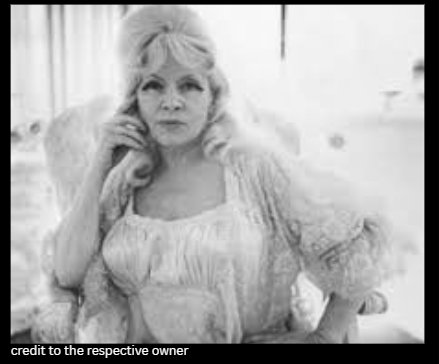Diane Arbus’s 1964 photo series of Mae West in her Santa Monica home captured a raw, unfiltered side of the aging Hollywood icon that West found deeply unflattering. Known for her stark and sometimes unsettling portraits, Arbus spent two days photographing West, whose legendary persona was built on a carefully crafted image of glamour, sex appeal, and wit. The resulting photos peeled back the illusion, revealing a woman in her seventies, still adorned in satin and lace but unmistakably mortal. This stark reality was something West could not accept, having spent her entire career maintaining an almost mythical aura of eternal desirability.
West threatened legal action against the publication of the photographs, reacting with disdain toward how Arbus had portrayed her. According to Allan Arbus, Diane’s husband, West “hated them because they were truthful.” This remark highlights the stark difference between Arbus’s vision and West’s self-image. While Arbus aimed for authenticity, often spotlighting the vulnerable and unconventional sides of her subjects, West had spent decades perfecting a persona that left no room for aging or flaws. She was a master of reinvention, carefully crafting her public appearances and interviews to uphold a signature style—one that suggested youth, power, and control.
The uneasy relationship between the two women and the aftermath of the photo session later inspired Australian writer Stephen Sewell’s play Arbus and West. This fictionalized take on their encounter explores themes of identity, truth, and the clash between old Hollywood illusion and raw photographic reality. The play delves into West’s struggle to preserve her image in a world moving beyond her, while Arbus, in her relentless quest for truth, reveals something deeper about beauty, fame, and the passage of time.
